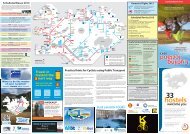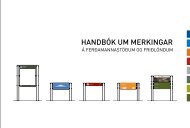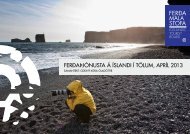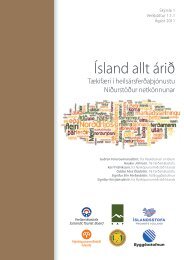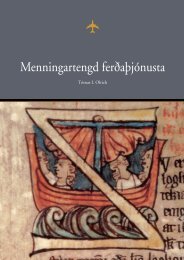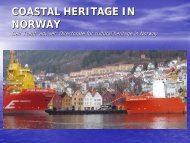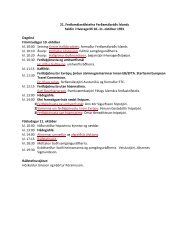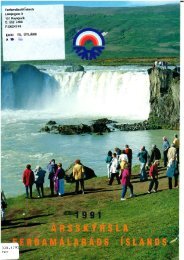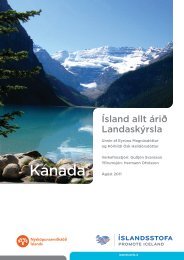Untitled
Untitled
Untitled
Create successful ePaper yourself
Turn your PDF publications into a flip-book with our unique Google optimized e-Paper software.
At that time Iceland was portrayed as cold, dreary and uninteresting.<br />
With a population size of approximately 60.000 people, it was usually not<br />
geographically imagined as more than a small white dot somewhere in the<br />
middle of a North Sea. In cartographic representation it could appear as an<br />
insert on the upper left corner on the map of Denmark, its colonial ruler till<br />
1944.<br />
That the country itself [Iceland], or any thing that is to be found here, is<br />
worth a journey to see, or that the history or habits of the people possess<br />
any degree of interest, has not, probably, crossed the minds of a<br />
thousand persons (Miles 1852, in Boucher 1989, p.17).<br />
But times rarely stand still. Thomas Cook made tourism history in<br />
the midst of European modernity, where modern tourists began to appear<br />
mobile on railways, ocean liners, and later in aeroplanes. With the advent<br />
of modern tourism came the possibility for places on Earth to mutate into<br />
tourist destinations. And so it is that there is another story to be told today<br />
about a former remote island like Iceland. After all, “it has not been<br />
thought advisable to leave this country entirely alone, especially in an age<br />
of travel and discovery like the present” (Miles 1852, in Boucher 1989, p.<br />
17). Iceland has become a place in popular domestic and international<br />
tourism imaginationing:<br />
with every part of the country, every town or district, making a<br />
conscientious effort to offer tourists something special. /.../ Travelling<br />
around Iceland to enjoy nature and the local’s way of life is a wonderful<br />
and enjoyable activity (Skarphéðinsson 2008, p. 2).<br />
As etymology reminds us, travelling used to be an activity full of<br />
labour and associated with all the hard work needed to overcome the<br />
difficulty of going anywhere. Modernization changed that by creating a<br />
very tangible infrastructure for transportation and geographical mobility<br />
over the surface of the Earth. Modernity does not only mean that<br />
“everything solid melts into air”, as the ring-road on Iceland well<br />
illustrates. Yet, these material processes of modernization were<br />
accompanied by modernity, that is, ways of imagining one’s place and<br />
possible routes of belonging and escape in a sea of change. By entering the<br />
gates of tourism imaginationings some places like Iceland were eventually<br />
43



